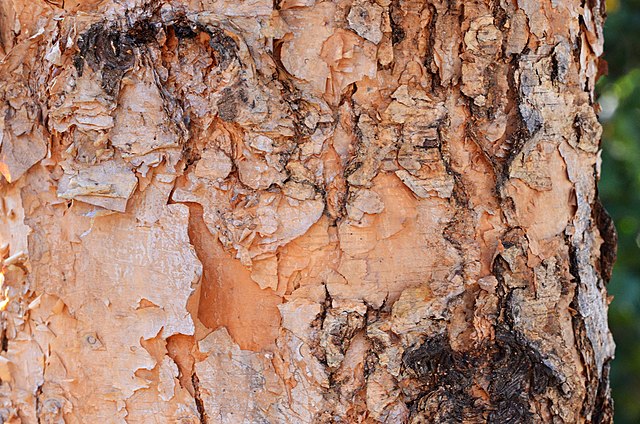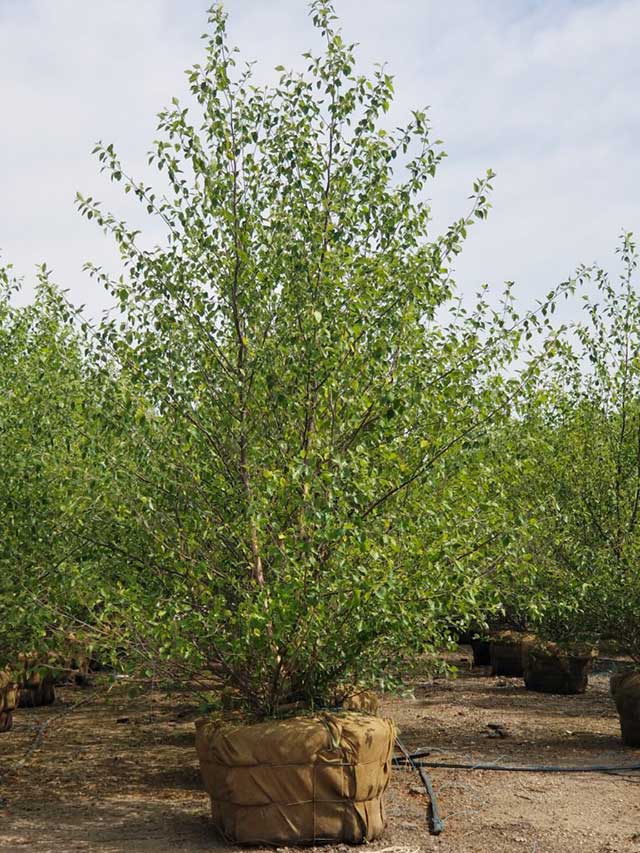betula
Betula River Birch
Betula nigra, commonly known as river birch, is a deciduous tree native to the eastern United States. Widely appreciated for its elegant appearance, adaptability, and distinctive bark, the river birch has become a favored choice for landscaping. As we explore the key characteristics and cultivation aspects of this versatile tree, it becomes apparent why it has earned a place in both urban and natural settings.
River birch is indigenous to a vast region, stretching from the Appalachian Mountains to the Gulf Coast. It is particularly prevalent along riverbanks, streams, and in other moist, low-lying areas. This tree’s natural habitat underscores its affinity for consistently moist soils, making it an ideal candidate for gardens and landscapes with such conditions.
When integrating river birch into a landscape, consider companion plants that complement its aesthetic and thrive in similar environments. The tree’s multi-stemmed form and dappled shade make it an excellent companion for shade-loving perennials like hostas, astilbes, or ferns. Additionally, river birch pairs well with understory plants such as azaleas and hydrangeas, creating a harmonious and visually appealing composition.
Size – River birch typically grows to a height of 40 to 50 feet with a spread ranging from 30 to 40 feet. Its graceful, weeping branches contribute to its overall elegance, making it an impactful presence in any landscape.
Light Exposure – This tree flourishes in full sun (best) to partial shade, showcasing its adaptability to various light conditions. Its ability to thrive in both settings makes it a versatile choice for different garden designs.
Bark – One of the standout features of the river birch is its distinctive bark. Ranging from cinnamon to reddish-brown, the bark peels away in thin, curling layers, adding a unique and eye-catching texture to the tree’s appearance throughout the year.
Leaves – The leaves of the river birch are ovate and serrated, with a vibrant green color during the growing season. In the fall, they turn a pleasing yellow, contributing to the tree’s seasonal appeal.
Cultural Requirements – Betula river birch is known for its adaptability to various soil types, including both wet and well-drained soils. While it prefers consistently moist conditions, it can tolerate brief periods of drought once established. Regular watering during dry spells is advisable for optimal growth.
Fertilizer – River birch generally thrives without the need for heavy fertilization. A balanced, slow-release fertilizer applied in early spring can provide the necessary nutrients for healthy growth. Excessive fertilization should be avoided to prevent potential issues.
Pruning – Pruning requirements for river birch are minimal. Regularly remove dead or damaged branches to maintain a tidy appearance and encourage airflow. Additionally, selective pruning can be done in late winter or early spring to shape the tree or address any structural concerns.
Category: Trees – River Birch near me – Betula Nigra – Birch


